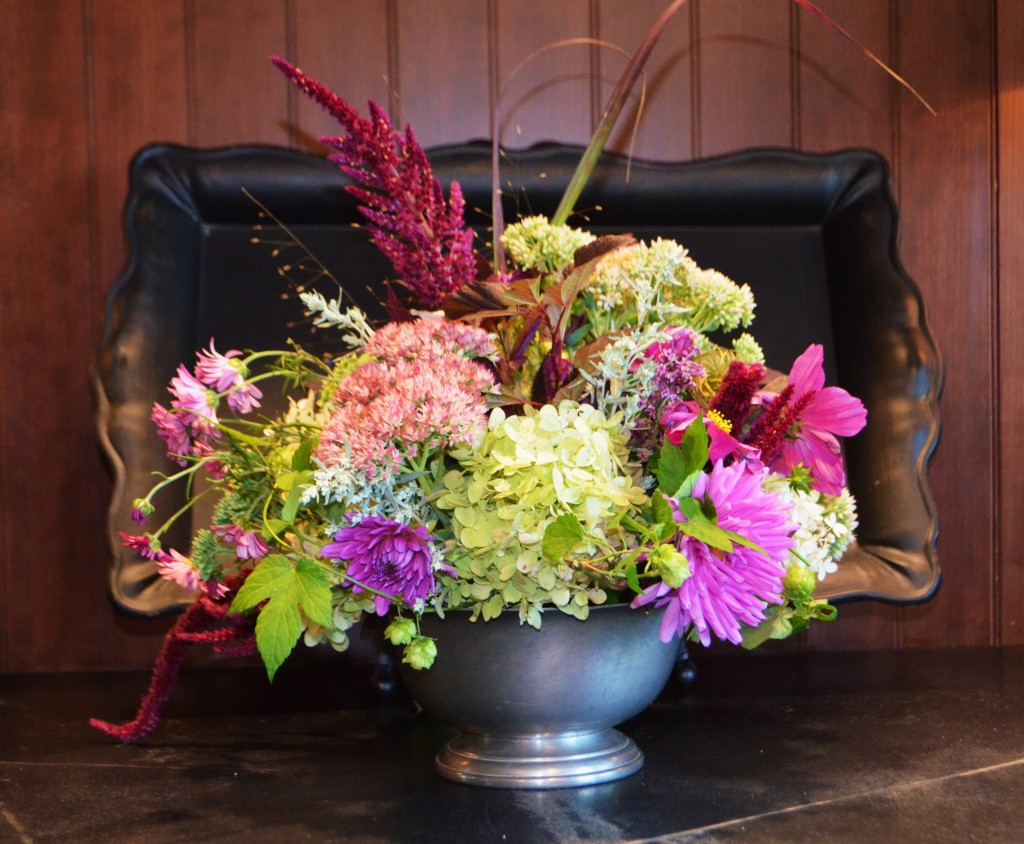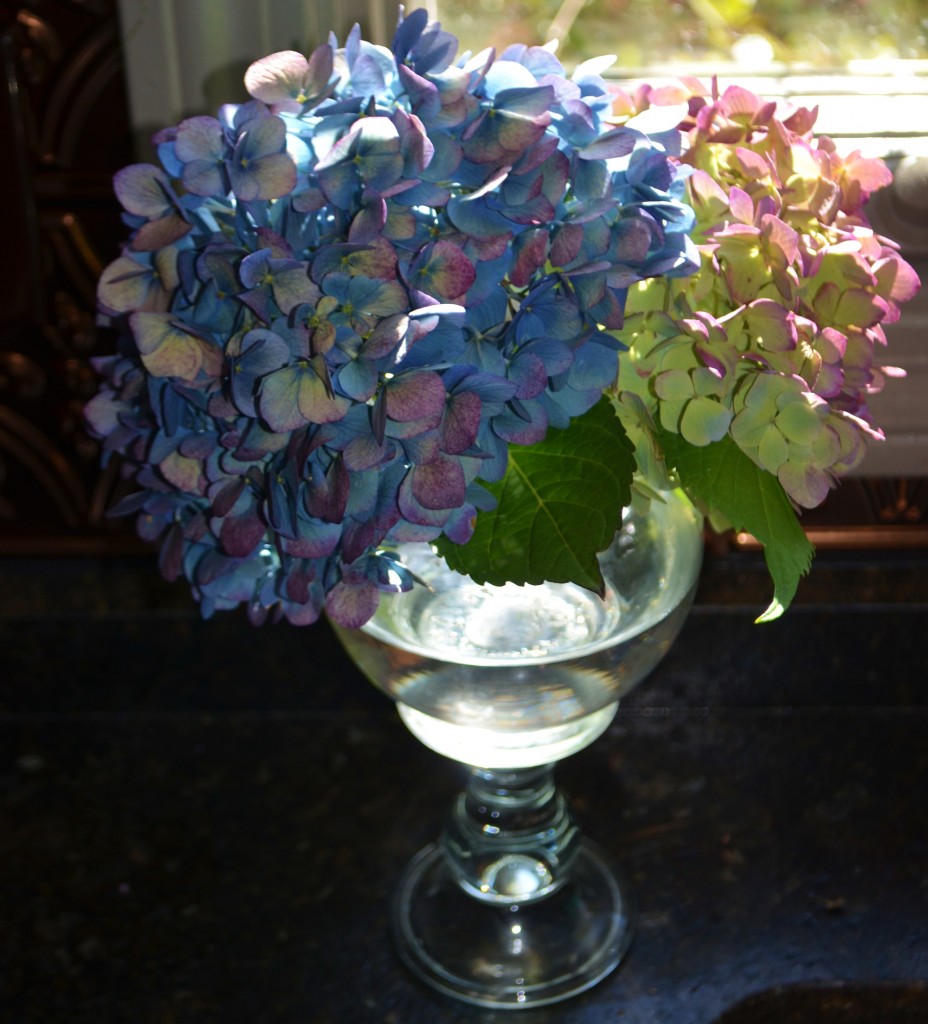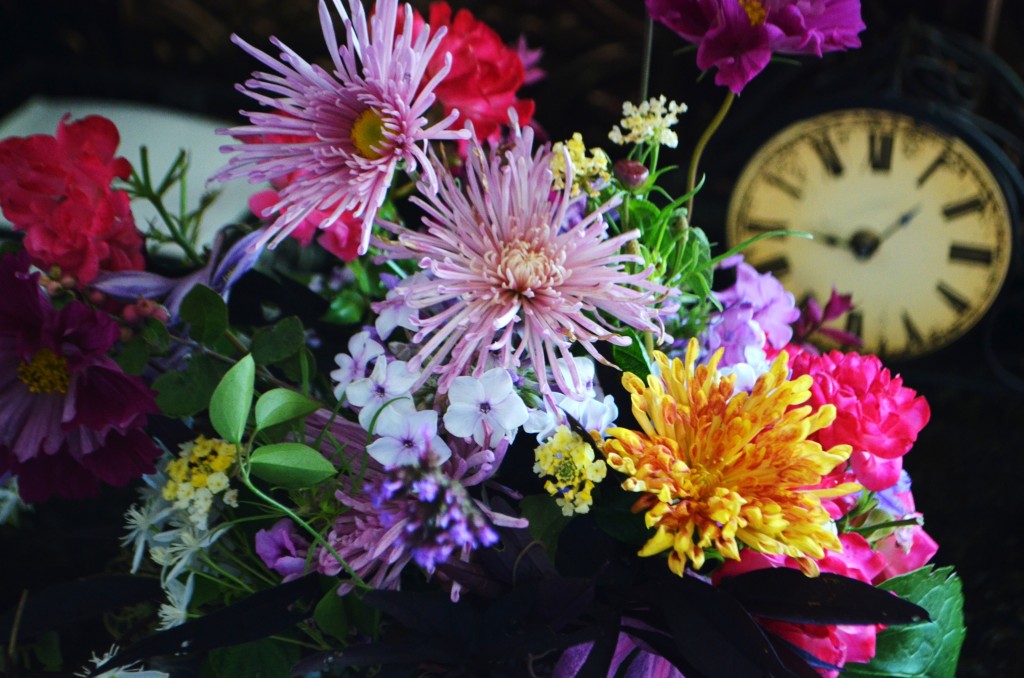 Here in New England, much like our friend the ant from Aesop’s fable, we feel the press of time as the days get shorter and the nights longer and colder, knowing soon we will be bundled up and rushing through a bleak landscape or viewing it from within our heated homes that will be even bleaker without the addition of fresh flowers picked from the garden.
Here in New England, much like our friend the ant from Aesop’s fable, we feel the press of time as the days get shorter and the nights longer and colder, knowing soon we will be bundled up and rushing through a bleak landscape or viewing it from within our heated homes that will be even bleaker without the addition of fresh flowers picked from the garden.
Always when the weather starts to turn I feel frantic about cutting and photographing my flowers. Part of this has to do with work, as any presentations I am writing will need appropriate photos taken during blooming season, and the success of the Pressed Flower Workshop relies on me having cut and preserved oodles of stuff. But an even larger part has to do with my adoration of all things floral and knowing that even though I can ( and do) cuts many things from my winter garden it is not the same and often I will resign myself to heading to the floral market to add some much needed color when days are long and gray.
Hence this post on Arranging Fall. I have been busy speaking to groups over the last two weeks and I bring a floral arrangement with me any time I can. The photo up top is a view of the one I am bringing tonight when I will lecture to a local garden club on growing clematis. In the container are just three clematis ; terniflora or ‘Sweet Autumn’ as it is commonly called,’ Comtesse de Bouchard’ that remains blooming out front, and the leaves of the groundcover ‘Mrs. Robert Brydon’. The rest of the arrangement is a virtual snapshot of the garden and includes two mums ‘Centerpiece’ and ‘Matchstick’, cosmos, the Drift Rose ‘Sweet’, garden phlox ‘Nora Leigh’, snowberry ‘Amethyst’, callicarpa berries, salvia ‘Wendy’s Wish’, hosta flowers , yellow lantana, and foliage of Ipomoea “Black Heart ‘ or sweet potato vine and dogwood berries. Also stuck in there are several fluffy clematis seed heads .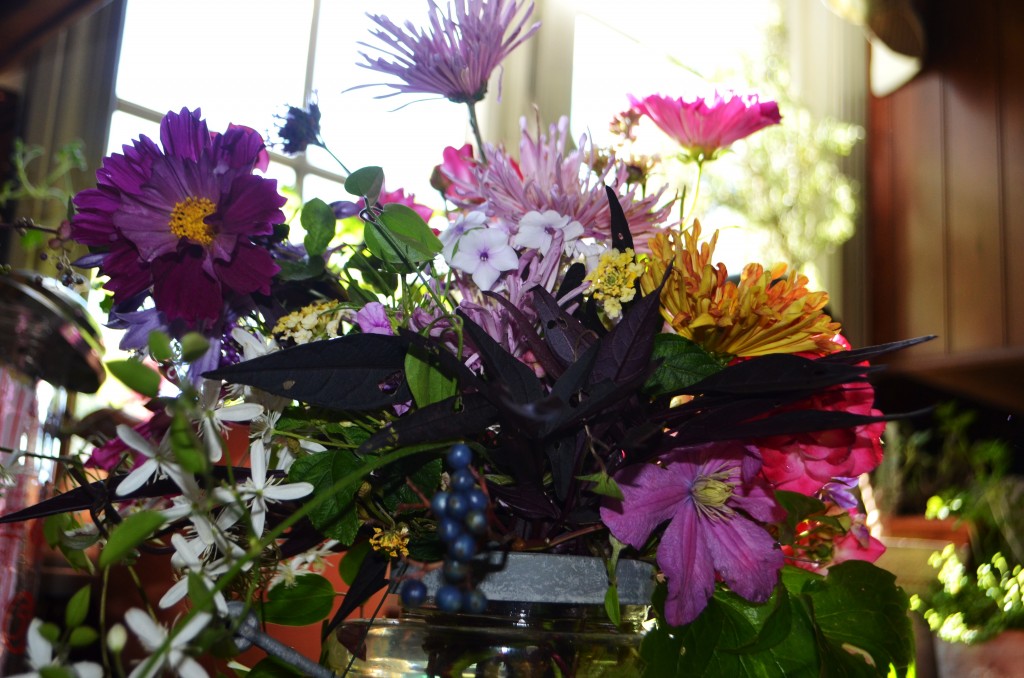
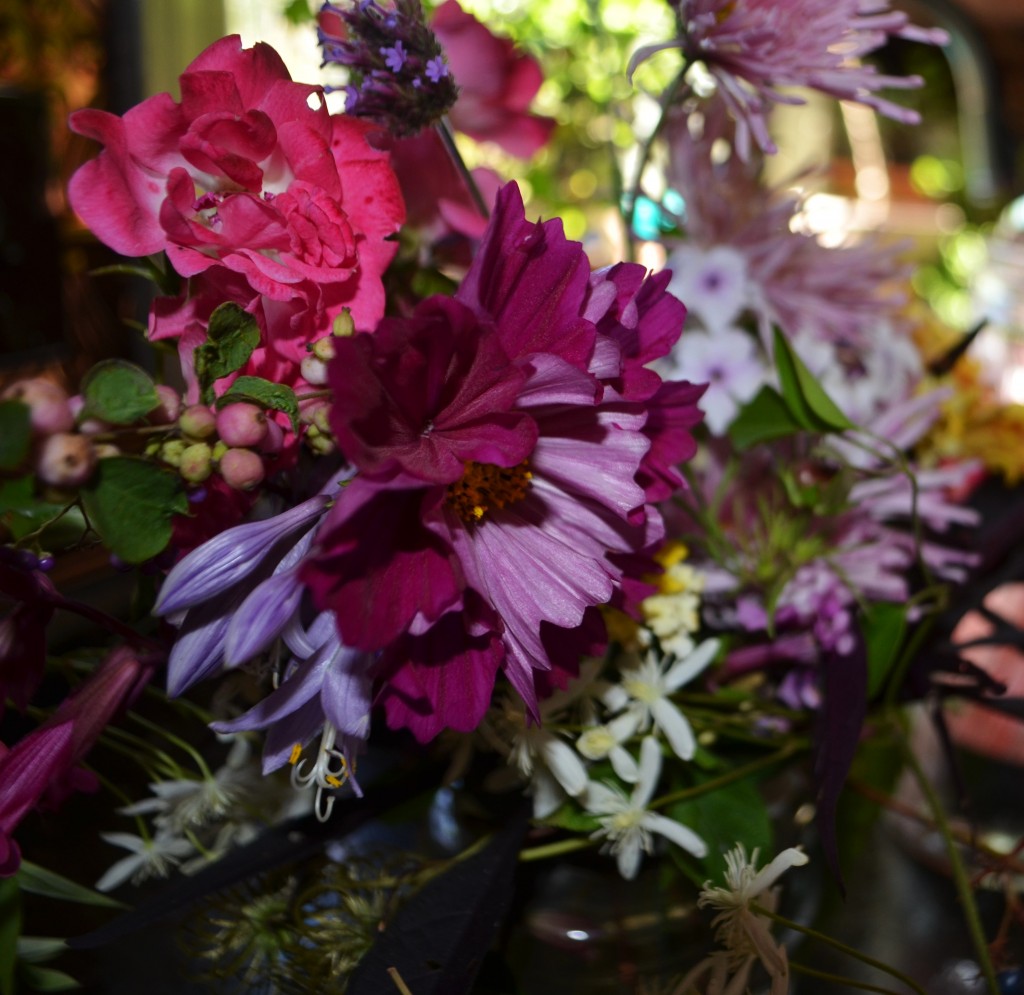
I have also been bringing in many hydrangea blossoms . As the weather starts to cool ,hydrangea flowers start to turn color, almost like someone was burnishing or antiquing them. It is a look I adore. If you cut them now when all their flowers are fully open and the color is stunning and place them in a vessel with just a scant amount of water that their stems can reach now ( maybe covering them by 1/2inch) and then let that water evaporate (don’t change it or refresh it) they will dry naturally in the vase and you can enjoy them all winter. My most beautiful blue, a variety called’ Nikko Blue’ dries so perfectly and with such intense color I have vases that are several years old still on display ( admittedly dusting them is the not so fun part of keeping them for such a long time ).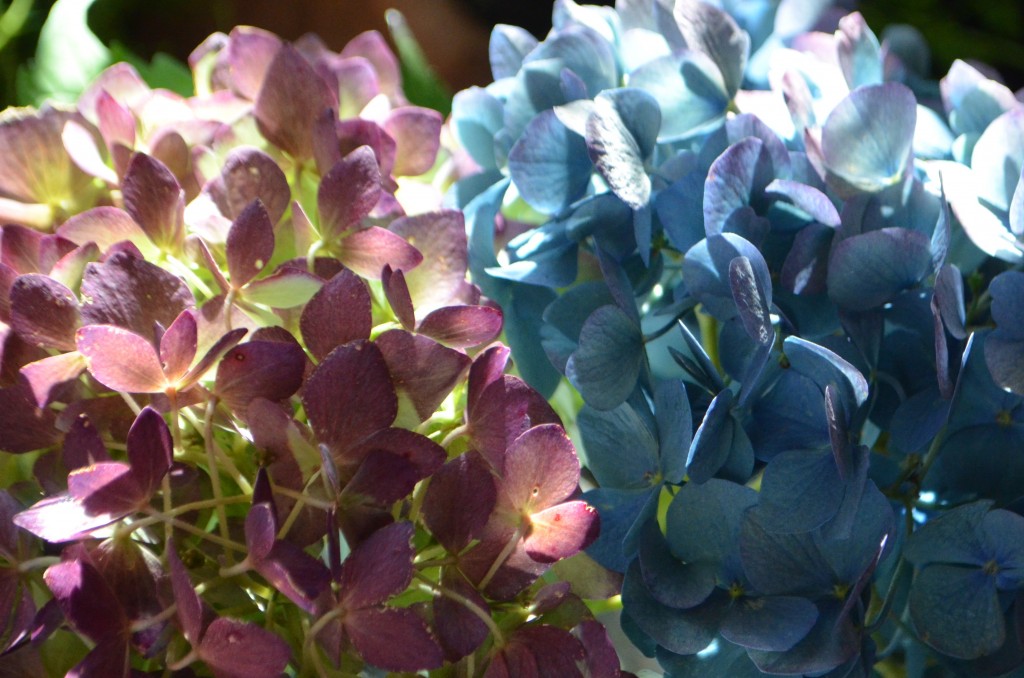
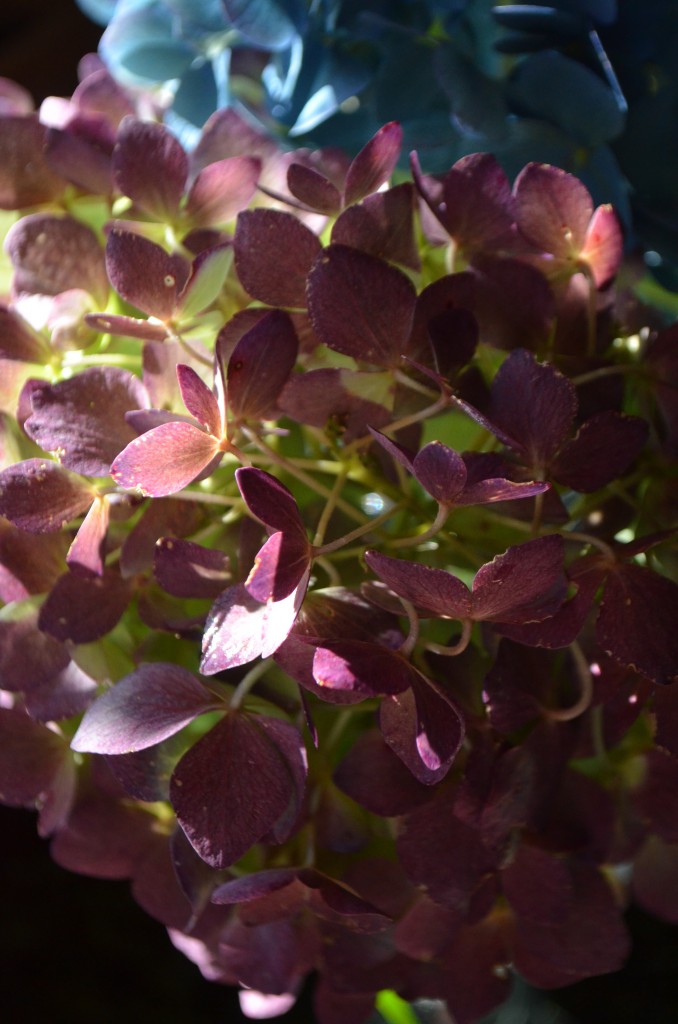
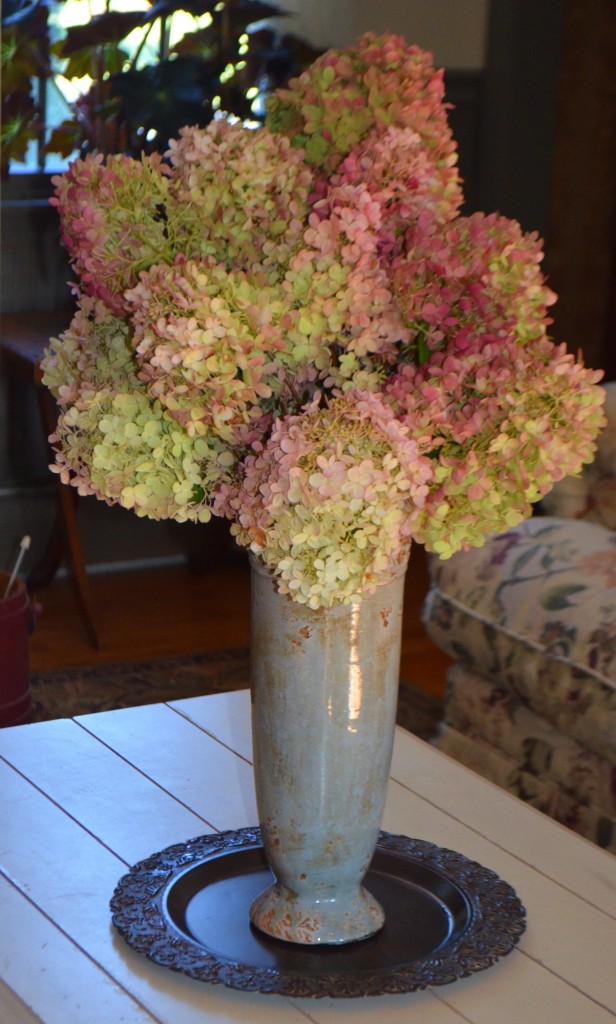
..
.
.
.
.
.
.
.
.
.
.
.
.
.
.
.
.
.
.
.
.
.
.
.
.
.
.
.
.
.
..
.
.
.
.
.
.
.
.
.
Dahlias , another of my late garden loves, make the most incredible cut flowers. Never cut one until it is fully open, they will not open any further in the vase if you do. They combine so well with other late season garden bounty, like berries and changing leaves, and often just one or two flowers is enough for the whole arrangement. I usually make an arrangement with just 2 or 3 dahlias and as much coleus foliage as I can cut on the night of our first frost warning. Coleus is among the first plants that turn mushy and die , yet it will keep for weeks in water and I can just change out the dahlias to whatever I want after they pass.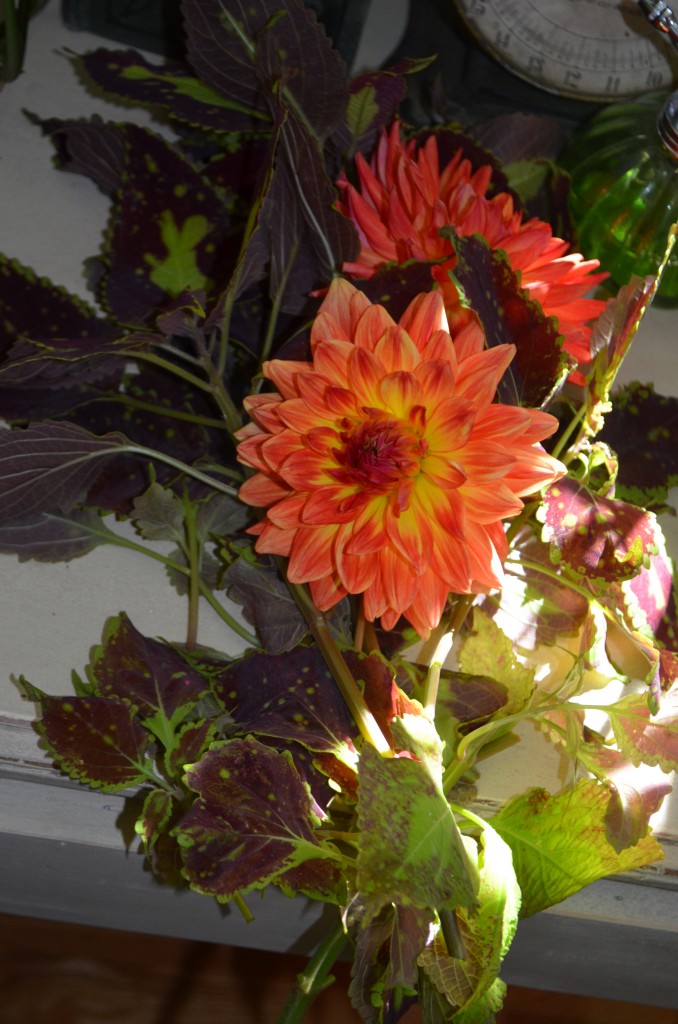
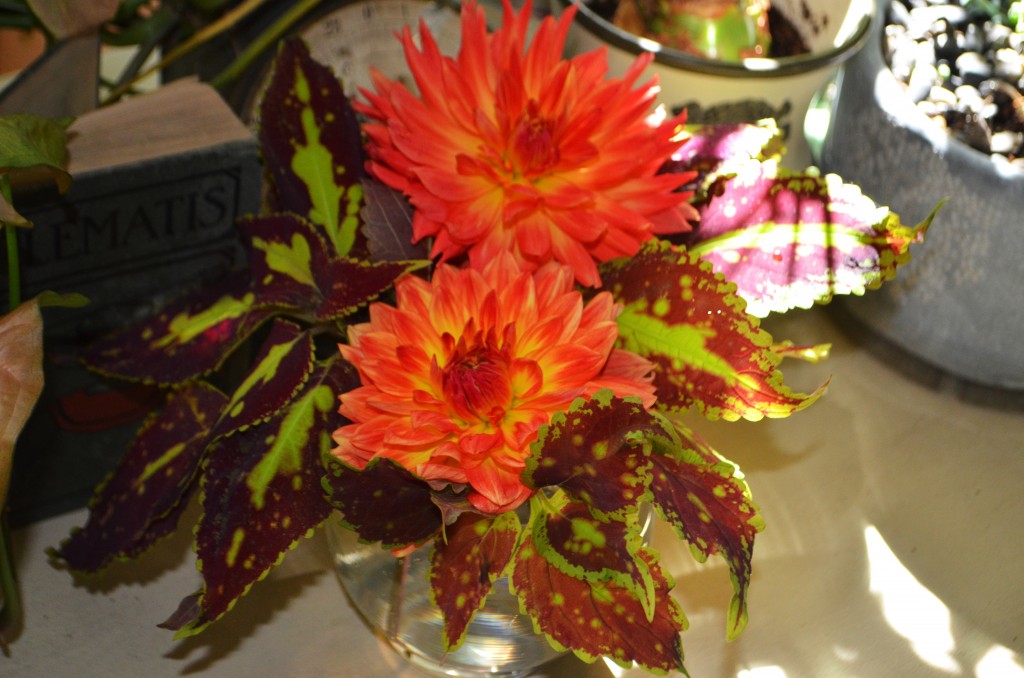
.
.
.
.
.
.
.
.
.
..
.
.
.
.
.
.
.
.
.
.This small vase of Staffordshire pottery I picked up on my last antiquing trip is filled with dahlias, sunflowers, purple fountain grass, reddish peony foliage (so dreamy when it changes color! and I faced it the wrong way in the photo!) blue gentian and a rose called ‘All the Rage”. In the second photo you can see it when it opened. 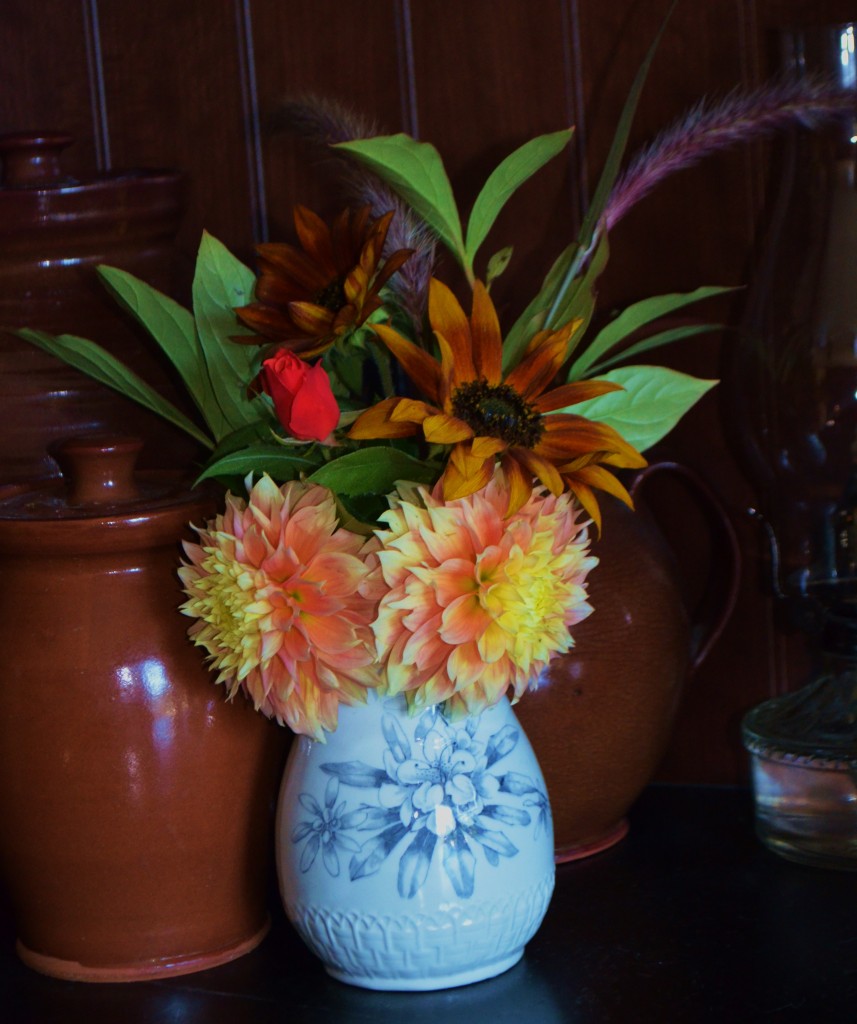
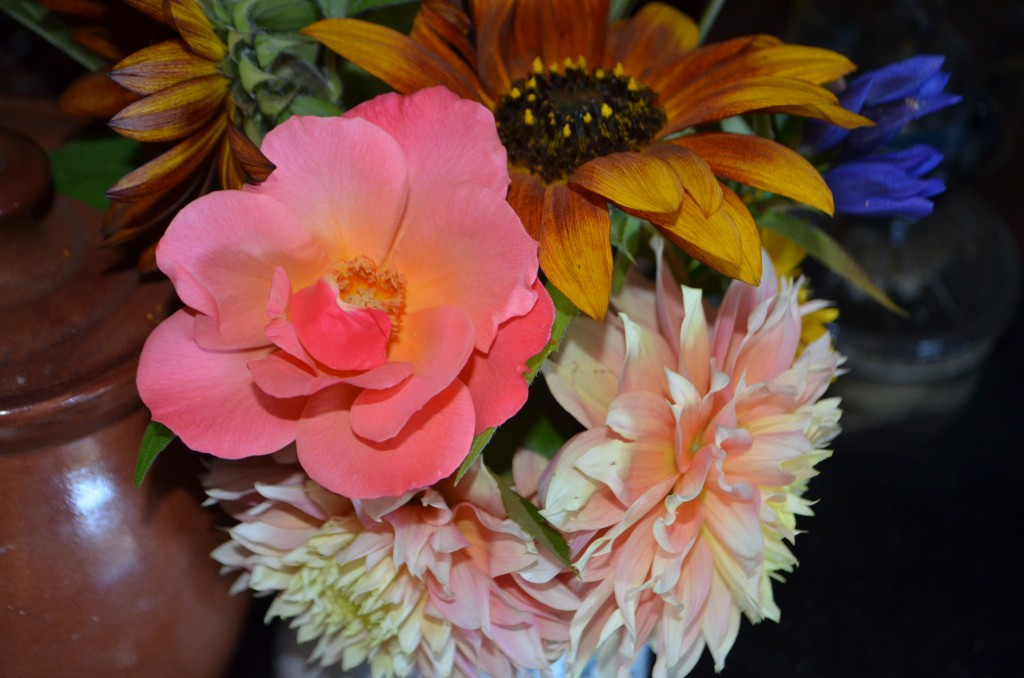
The trick when arranging flowers/garden material in fall is to think outside the box and cut lots of interesting things that are not necessarily flowers. Viburnums have great berries, as do callicarpa, snowberry, red osier dogwood, roses (hips),and hollies. Foliage of peony which I never cut in the summer but use constantly this time of year , 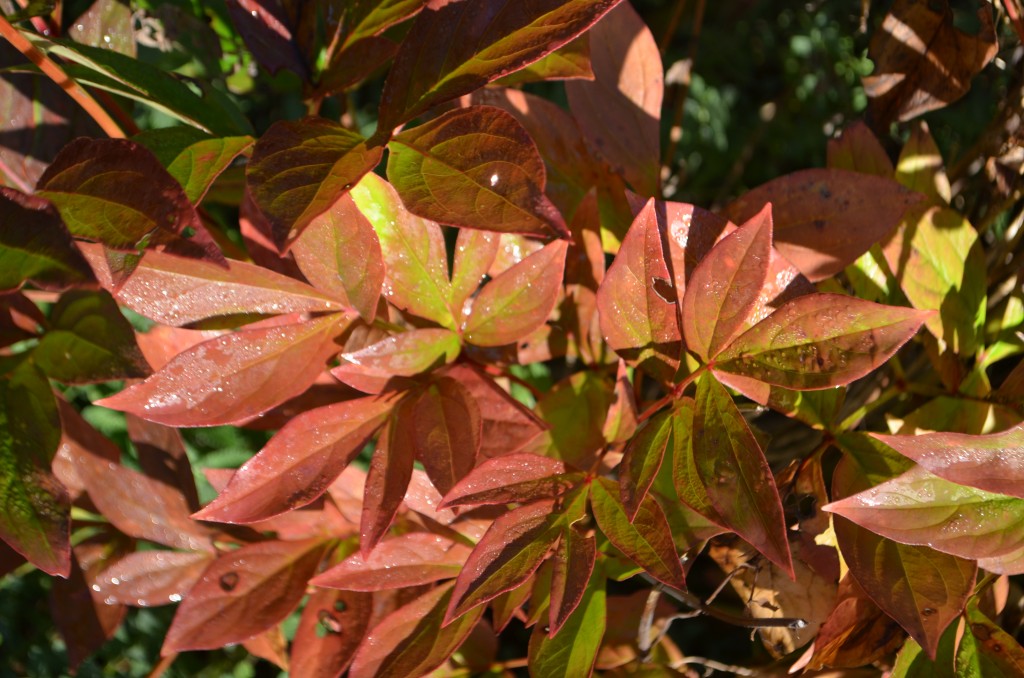 viburnums, evergreens, hucheras that sport stronger color variation with cooling temps, grass plumes, seed heads from perennials like coneflowers , penstemons and clematis, branches of heptacodium or seven sons flower tree after the bracts turn red. The list could go on and on.
viburnums, evergreens, hucheras that sport stronger color variation with cooling temps, grass plumes, seed heads from perennials like coneflowers , penstemons and clematis, branches of heptacodium or seven sons flower tree after the bracts turn red. The list could go on and on.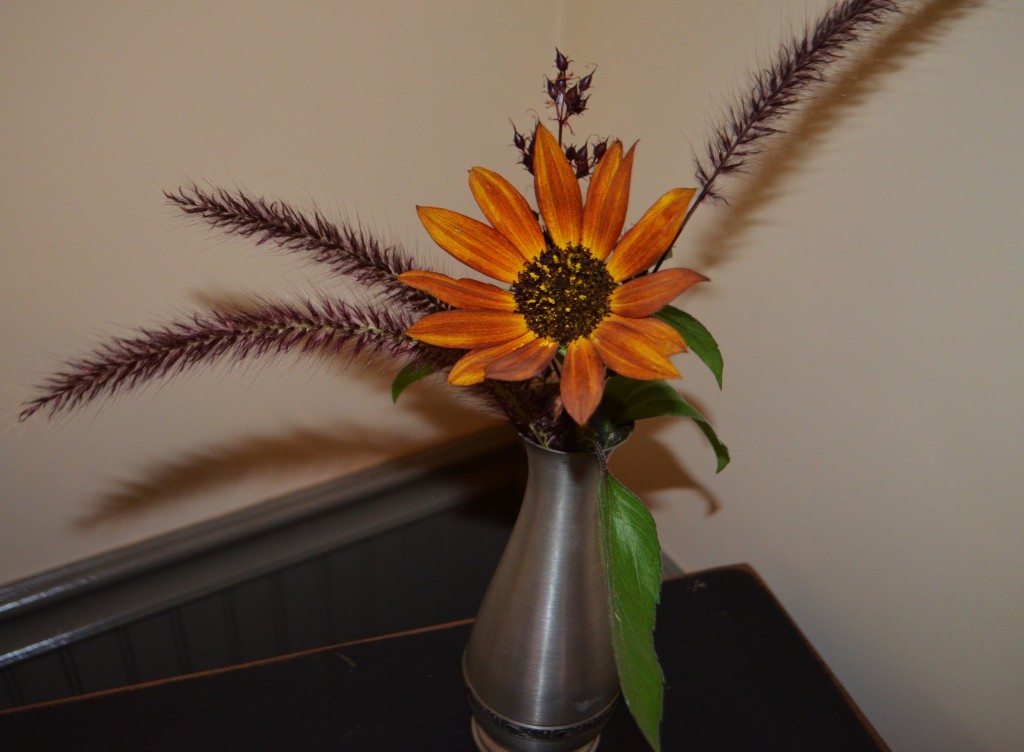
As for flowers , make sure you have planted a variety of winter hardy mums, re-blooming roses, dahlias, hydrangeas, sunflowers ( seed several times over the summer), pansies, rudbeckias, asters , heleniums, late blooming phlox like ‘Nora Leigh’, Montauk daisies, sedum and gaillardias (which will bloom even through a few light frosts) .